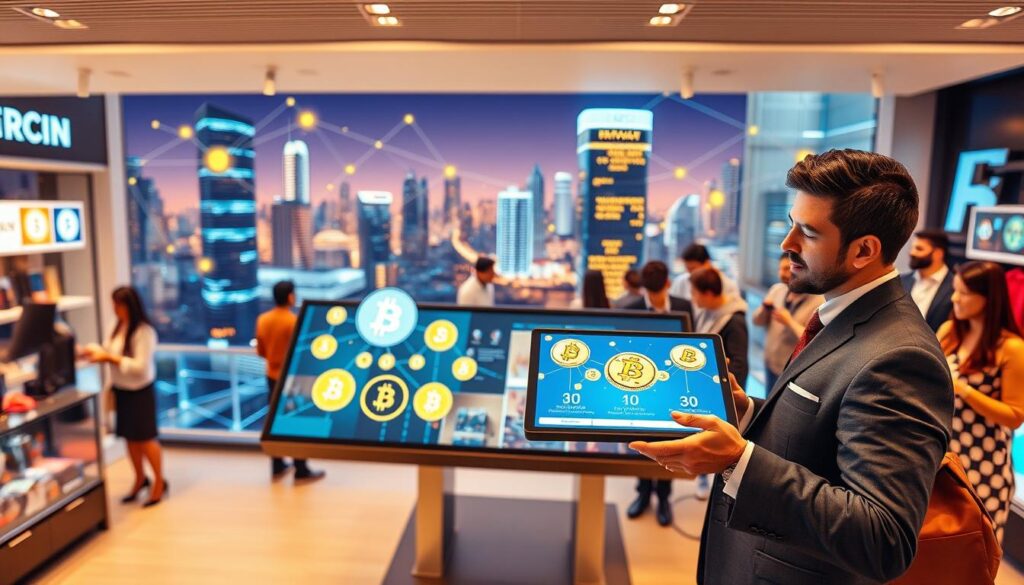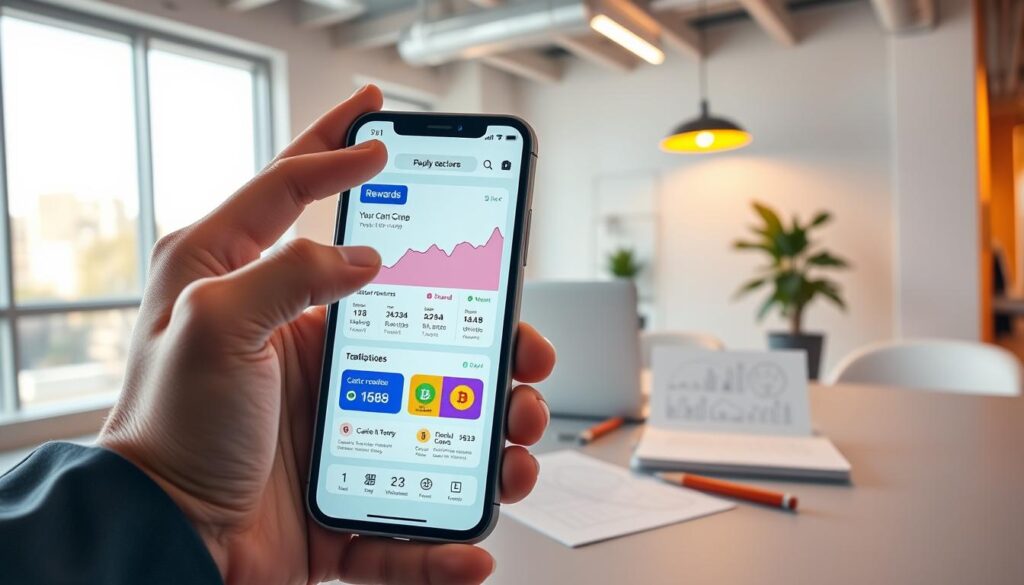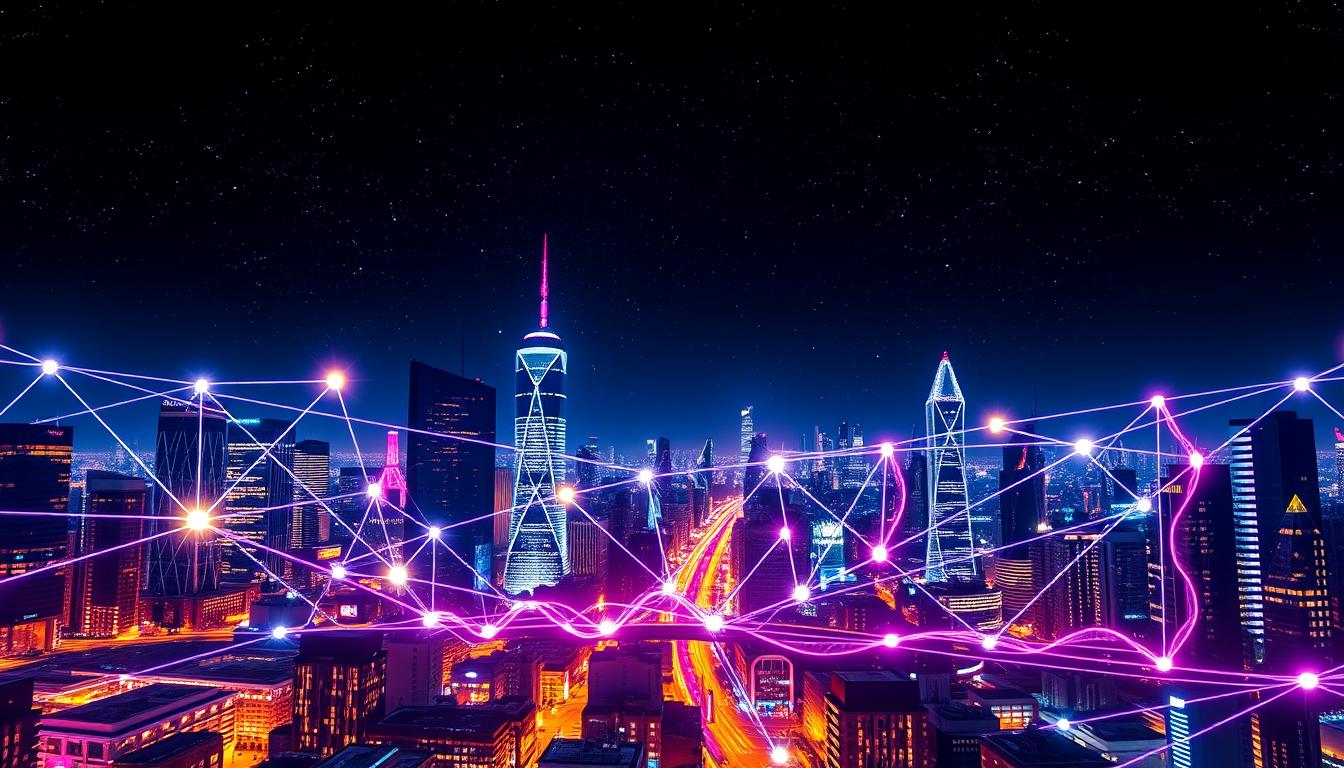Now Reading: Tokenized Real-World Assets in Crypto: Complete Guide
- 01
Tokenized Real-World Assets in Crypto: Complete Guide
Tokenized Real-World Assets in Crypto: Complete Guide

The world of cryptocurrency has evolved beyond the realm of virtual currencies, opening up new frontiers for investment and asset management. One of the most exciting developments in this space is the emergence of tokenized real-world assets, where traditional physical assets are transformed into digital tokens that can be traded, invested, and managed through blockchain technology. This comprehensive guide delves into the intricacies of this transformative concept, exploring its mechanisms, benefits, challenges, and the future it holds for the crypto ecosystem.
Tokenized real-world assets refer to the process of digitizing and representing physical assets, such as real estate, art, or commodities, as cryptocurrencies or digital tokens. This revolutionary approach to asset ownership and management has the potential to unlock new investment opportunities, enhance liquidity, and democratize access to traditionally exclusive markets.
By exploring the mechanisms behind asset tokenization, this guide examines how real-world assets are converted into digital tokens, the role of smart contracts, and the implications for the broader crypto landscape. It delves into the diverse range of tokenized assets, from real estate and artwork to precious metals and collectibles, highlighting the unique benefits and challenges associated with each.
As the adoption of tokenized assets continues to grow, this guide also addresses the regulatory considerations, market dynamics, and technological barriers that must be navigated to ensure the seamless integration of these innovative financial instruments. By examining case studies of successful tokenization projects and the involvement of key players in the space, readers will gain a comprehensive understanding of the transformative potential of tokenized real-world assets in the crypto ecosystem.
Key Takeaways
- Tokenized real-world assets represent the digitization of physical assets, enabling new investment opportunities and liquidity.
- The tokenization process involves the conversion of assets into digital tokens, facilitated by blockchain technology and smart contracts.
- Tokenization can provide improved liquidity, fractional ownership, and reduced transaction costs for a wide range of real-world assets.
- The crypto ecosystem is witnessing the emergence of tokenized real estate, artwork, and commodities, each with their unique benefits and challenges.
- Regulatory compliance and technological barriers remain key considerations for the widespread adoption of tokenized assets.
Introduction to Tokenized Real-World Assets
In the dynamic world of cryptocurrency, a new frontier has emerged – the tokenization of real-world assets. This innovative concept involves representing physical assets, such as real estate, artwork, or commodities, as digital tokens on blockchain networks. By tokenizing these tangible assets, the crypto ecosystem gains a powerful tool to bridge the gap between traditional finance and decentralized systems.
What Are Tokenized Real-World Assets?
Tokenized real-world assets are digital representations of physical assets that exist on a blockchain. These tokens are backed by the underlying physical asset, providing investors and users with a way to interact with and trade these assets in the digital realm. Crypto Asset Tokenization enables the fractionalization of ownership, improved liquidity, and simplified transfer processes, revolutionizing how we manage and exchange digital assets.
Importance in the Crypto Ecosystem
The integration of tokenized real-world assets into the Crypto Asset Tokenization ecosystem holds immense significance. By linking traditional assets with the transparency and security of blockchain technology, these tokens unlock new avenues for investment, trading, and Digital Asset Management. This convergence of the physical and digital worlds has the potential to drive greater adoption and mainstream integration of cryptocurrencies and blockchain-based solutions.
| Tokenized Asset | Potential Applications |
|---|---|
| Real Estate | Fractional ownership, increased liquidity, simplified transactions |
| Artwork | Provenance tracking, fractional ownership, digital art trading |
| Commodities | Enhanced traceability, efficient global trade, improved price discovery |
As the crypto ecosystem continues to evolve, the integration of tokenized real-world assets is poised to redefine the way we interact with and manage our digital assets, ultimately paving the way for a more inclusive and interconnected financial landscape.
The Mechanism of Tokenization
Tokenizing real-world assets is a complex process that involves the creation of digital representations and the issuance of tokens. At the heart of this mechanism are Smart Contracts, which play a crucial role in automating and securing the tokenization process, ensuring transparency and trust.
How Real-World Assets Are Tokenized
The tokenization of real-world assets typically follows a multi-step approach. First, the physical asset, such as real estate, artwork, or a commodity, is securely stored or held in custody. Next, a digital token is minted, representing fractional or full ownership of the underlying asset. This token is then issued on a Blockchain Tokenization platform, where it can be traded, transferred, or managed through the use of smart contracts.
The Role of Smart Contracts
Smart contracts are self-executing digital agreements that enforce the terms and conditions of a transaction automatically. In the context of tokenization, smart contracts are essential for managing the lifecycle of the tokens, including issuance, trading, and redemption. They ensure the transparency and integrity of the tokenization process, reducing the need for manual intervention and minimizing the risk of fraud or errors.
| Process | Description |
|---|---|
| Asset Custody | The physical asset is securely stored or held in custody, ensuring its safekeeping. |
| Token Minting | A digital token is created, representing fractional or full ownership of the underlying asset. |
| Token Issuance | The token is issued on a Blockchain Tokenization platform, where it can be traded, transferred, or managed. |
| Smart Contract Management | Smart contracts automate the lifecycle of the tokens, including issuance, trading, and redemption, ensuring transparency and integrity. |
The combination of secure asset custody, token minting, and smart contract management ensures the Blockchain Tokenization of real-world assets is a robust and reliable process, paving the way for a new era of asset ownership and management.
Benefits of Tokenization in Crypto
Tokenizing real-world assets has opened up a new frontier in the crypto ecosystem, unlocking a wealth of benefits for investors and asset owners alike. Among the key advantages of this transformative technology are improved liquidity, fractional ownership, and reduced transaction costs.
Improved Liquidity
Traditionally, many real-world assets have been plagued by limited liquidity, making it challenging for owners to quickly convert their holdings into cash. Tokenization, however, has the power to change this dynamic. By representing these assets on the blockchain, they can be seamlessly traded on secondary markets, providing investors with enhanced access and the ability to more easily enter and exit positions.
Fractional Ownership
Another significant benefit of tokenization is the ability to offer Fractional Ownership of assets. This revolutionary concept allows investors to participate in Tokenized Investment Opportunities that were previously inaccessible or reserved for the wealthy. By dividing ownership into smaller, more accessible units, tokenization democratizes access to a wide range of Fractional Ownership opportunities, empowering a broader pool of investors to capitalize on these Tokenized Investment Opportunities.
Reduced Transaction Costs
Tokenization also presents the potential to significantly reduce the transaction costs associated with the management and transfer of real-world assets. By leveraging blockchain technology, the traditionally cumbersome and expensive processes involved in asset ownership and transfers can be streamlined, leading to lower fees and a more efficient overall ecosystem.
| Benefit | Description |
|---|---|
| Improved Liquidity | Tokenized assets can be easily traded on secondary markets, providing investors with enhanced access and the ability to quickly enter and exit positions. |
| Fractional Ownership | Tokenization allows for the division of asset ownership into smaller, more accessible units, democratizing access to a wide range of Tokenized Investment Opportunities. |
| Reduced Transaction Costs | Blockchain-powered tokenization can streamline the traditionally cumbersome and expensive processes involved in asset ownership and transfers, leading to lower fees and a more efficient ecosystem. |
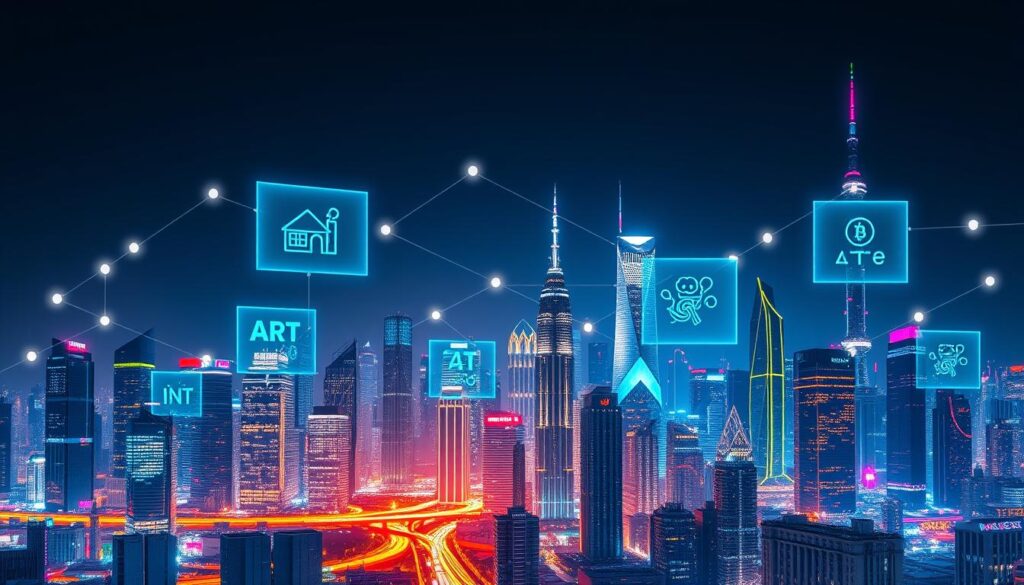
The combination of these benefits has made tokenization an increasingly attractive option for both investors and asset owners, transforming the way we perceive and interact with real-world assets in the crypto space.
Types of Tokenized Real-World Assets
The world of crypto has witnessed a remarkable expansion in the tokenization of various real-world assets, each with its unique characteristics and applications. Among the most prominent categories of tokenized assets are real estate, artwork, and commodities.
Real Estate Tokenization
Real estate, long considered a pillar of traditional investment portfolios, has found a new avenue for accessibility and liquidity through tokenization. By tokenizing real estate properties, investors can now enjoy fractional ownership and the ability to trade these tokens on secondary markets, unlocking new investment opportunities. Real Estate Tokenization has garnered significant attention, with numerous successful projects showcasing the potential of this emerging trend.
Tokenized Artwork
The art world has also embraced the concept of tokenization, allowing for the fractionalization of valuable artworks. Through tokenization, art enthusiasts and investors can now own a portion of renowned paintings, sculptures, or other artistic masterpieces, democratizing access to these previously exclusive assets. This innovation has the potential to revolutionize the art market, fostering greater liquidity and expanding the pool of art investors.
Tokenized Commodities
Tokenized Commodities, such as precious metals, agricultural products, and energy resources, have become increasingly popular in the crypto ecosystem. By tokenizing these physical assets, investors can gain exposure to commodity markets with enhanced transparency, security, and ease of trading. This development has opened up new avenues for diversification and risk management within crypto portfolios.
| Asset Type | Tokenization Benefits | Examples |
|---|---|---|
| Real Estate | Fractional ownership, improved liquidity | Smartlands, RealT |
| Artwork | Democratized access, enhanced liquidity | Maecenas, Portion |
| Commodities | Increased transparency, diversification | PAX Gold, Tether Gold |
The tokenization of these diverse real-world assets has transformed the investment landscape, offering new opportunities for investors and unlocking previously inaccessible markets. As the crypto ecosystem continues to evolve, the potential for further innovation and adoption of tokenized real-world assets remains promising.
Challenges in Tokenizing Real-World Assets
While the potential of Security Token Offerings and Crypto Asset Tokenization is vast, the widespread adoption of tokenized real-world assets faces several significant challenges. From regulatory hurdles to market acceptance and technological barriers, industry players must navigate a complex landscape to unlock the full benefits of this innovative approach.
Regulatory Considerations
The regulatory environment surrounding Security Token Offerings and Crypto Asset Tokenization remains a work in progress, with varying rules and guidelines across different jurisdictions. Navigating this regulatory landscape requires careful compliance, which can slow down the process and limit the accessibility of tokenized assets.
Market Adoption
Gaining widespread market acceptance for tokenized real-world assets is a crucial but challenging task. Investors and consumers may be hesitant to embrace this new asset class, particularly due to concerns about security, liquidity, and the overall maturity of the market.
Technological Barriers
The successful tokenization of real-world assets relies on robust technological infrastructure, including secure blockchain networks, smart contract functionality, and user-friendly platforms. Overcoming the technical complexities and ensuring seamless integration with traditional financial systems remains an ongoing challenge for the industry.
| Challenge | Key Considerations |
|---|---|
| Regulatory Considerations |
|
| Market Adoption |
|
| Technological Barriers |
|
Despite these challenges, industry leaders and regulators are actively working to address the obstacles and pave the way for the widespread adoption of Security Token Offerings and Crypto Asset Tokenization. As the technology and regulatory landscape continue to evolve, the future of tokenized real-world assets remains promising, with the potential to revolutionize the way we invest, trade, and manage a wide range of assets.
How Tokenization Enhances Asset Ownership
The rise of blockchain tokenization has revolutionized the way we manage and own digital assets. This innovative technology offers a new era of transparency and security, empowering asset owners and investors alike. By tokenizing real-world assets, the process of Digital Asset Management has become more streamlined and efficient than ever before.
Transparency and Security
Blockchain technology underpins the tokenization process, providing an immutable and transparent record of asset ownership. Each token represents a fractional share of the underlying asset, and its transactions are recorded on the blockchain, ensuring transparency and accountability. This increased visibility offers asset owners and investors a greater sense of security, as they can track the history and current status of their holdings with ease.
Simplified Transfer Processes
One of the key benefits of Blockchain Tokenization is the simplified transfer of asset ownership. Traditional methods of asset transfer can be cumbersome and time-consuming, but tokenization streamlines this process. Owners can seamlessly transfer their tokens to new investors or buyers, without the need for complex paperwork or intermediaries. This enhanced liquidity and accessibility further strengthens the case for tokenized asset ownership.
| Feature | Benefit |
|---|---|
| Transparency | Immutable record of asset ownership and transactions |
| Security | Increased protection against fraud and unauthorized access |
| Simplified Transfers | Streamlined process for transferring asset ownership |
By harnessing the power of blockchain tokenization, asset owners and investors can enjoy greater transparency, security, and liquidity in their digital asset management. This innovative approach is paving the way for a more efficient and user-friendly future in the world of digital asset ownership.
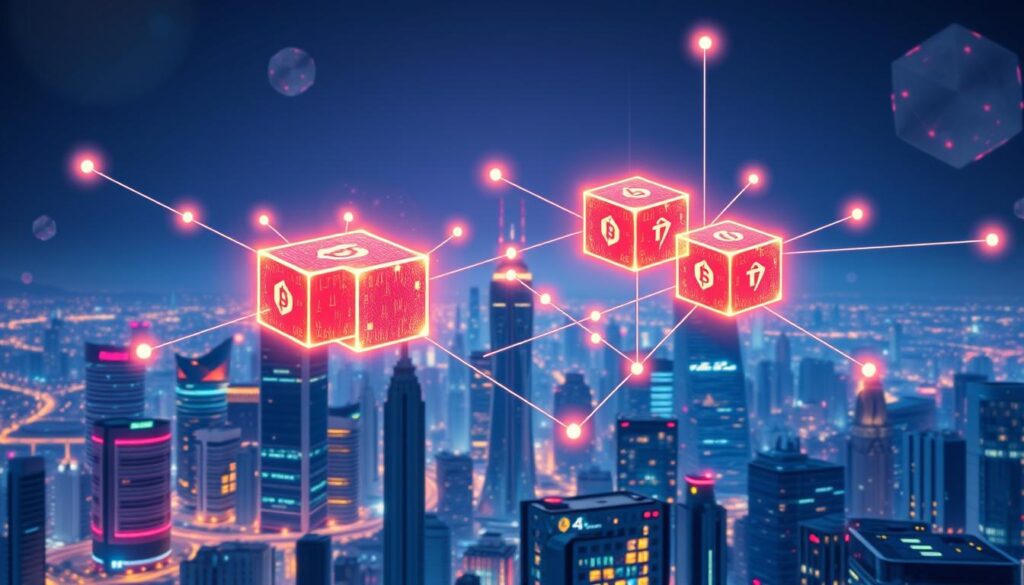
The Role of Blockchain Technology
At the heart of the tokenization revolution lies the transformative power of Blockchain technology. This decentralized, distributed digital ledger has emerged as a game-changer in the world of Digital Asset Management, empowering the secure and transparent representation of real-world assets as Blockchain Tokenization.
Decentralization in Asset Management
The decentralized nature of Blockchain technology is a pivotal factor in the rise of tokenized assets. By eliminating the need for centralized intermediaries, Blockchain enables a direct peer-to-peer exchange of tokenized assets, reducing transaction costs and enhancing overall efficiency. This decentralized framework ensures that asset ownership, transfer, and management are transparent and tamper-resistant, fostering trust and reliability within the ecosystem.
Enhanced Security Features
Blockchain’s inherent security features play a vital role in the credibility and trustworthiness of tokenized assets. The use of cryptographic encryption, distributed consensus mechanisms, and immutable transaction records ensures the integrity and security of digital asset ownership. This enhanced security safeguards against fraud, counterfeiting, and unauthorized access, providing investors and stakeholders with a heightened sense of confidence in the Blockchain Tokenization ecosystem.
“Blockchain technology is the backbone that enables the seamless and secure representation of real-world assets as digital tokens, transforming the way we manage and transfer ownership of valuable resources.”
By leveraging the decentralized architecture and robust security measures of Blockchain, the tokenization of real-world assets has paved the way for a more efficient, transparent, and accessible Digital Asset Management landscape. As the adoption of Blockchain Tokenization continues to grow, the future of asset ownership and transfer is set to be revolutionized.
Key Players in the Tokenization Space
The Tokenized Investment Opportunities and Security Token Offerings landscape is rapidly evolving, with a diverse array of players shaping the industry. From established financial institutions to innovative startups, as well as influential regulatory bodies, these key players are driving the adoption and development of tokenized assets.
Established Companies
Major financial institutions, such as investment banks and asset management firms, have been at the forefront of the tokenization movement. These established players are leveraging their expertise and resources to explore the potential of Tokenized Investment Opportunities, offering services like Security Token Offerings and tokenized asset management. By integrating tokenization into their existing frameworks, they aim to provide clients with innovative investment opportunities and streamlined asset management solutions.
New Startups
Alongside the established players, a growing number of technology-driven startups are making their mark in the Tokenized Investment Opportunities and Security Token Offerings space. These agile companies are developing cutting-edge platforms and solutions that enable the seamless tokenization of a wide range of real-world assets, from real estate to fine art. By leveraging blockchain technology and decentralized finance principles, these startups are poised to disrupt traditional investment models and democratize access to alternative asset classes.
Regulatory Bodies
Recognizing the transformative potential of Tokenized Investment Opportunities and Security Token Offerings, regulatory bodies worldwide have been actively shaping the legal and compliance landscape. These authorities are tasked with ensuring the integrity and stability of the tokenization ecosystem, balancing innovation and investor protection. Their role in establishing clear guidelines and standards is crucial for the widespread adoption of tokenized assets, fostering a secure and transparent investment landscape.
| Key Players | Role in Tokenization | Examples |
|---|---|---|
| Established Companies | Offering Tokenized Investment Opportunities and Security Token Offerings, integrating tokenization into existing frameworks | Investment banks, asset management firms |
| New Startups | Developing platforms and solutions for seamless tokenization of real-world assets | Fintech companies, blockchain-based platforms |
| Regulatory Bodies | Establishing guidelines and standards for the tokenization ecosystem, ensuring integrity and stability | SEC, FINRA, ESMA |
The dynamic interplay between these key players is shaping the future of Tokenized Investment Opportunities and Security Token Offerings, as they collectively work to unlock the full potential of this transformative technology.
Tokenization and Market Dynamics
The emergence of tokenized real-world assets in the crypto ecosystem has had a significant impact on market dynamics, influencing both asset prices and overall market liquidity. As these tokenized assets become more accessible to a broader range of investors, the effects on pricing and trading patterns are becoming increasingly evident.
Impact on Prices and Valuations
One of the primary effects of asset tokenization is its influence on asset prices and valuations. By reducing barriers to entry and enabling fractional ownership, tokenization has democratized access to previously illiquid or exclusive real-world assets. This increased accessibility has led to a surge in demand, driving up the prices of tokenized assets and, in turn, their overall valuations.
Market Liquidity Effects
Tokenization has also had a profound impact on market liquidity. By tokenizing previously illiquid assets, such as real estate or art, the crypto ecosystem has opened up new avenues for trading and investing. This increased liquidity has facilitated more efficient price discovery, allowing investors to enter and exit positions more easily. The result is a more dynamic and responsive market, with greater price transparency and reduced volatility.
| Impact | Explanation |
|---|---|
| Increased Accessibility | Tokenization reduces barriers to entry, allowing a broader range of investors to access previously exclusive real-world assets. |
| Fractional Ownership | The ability to own a portion of an asset through tokenization enables greater participation and diversification. |
| Enhanced Liquidity | Tokenization transforms illiquid assets into tradable instruments, improving market liquidity and price discovery. |
As the adoption of tokenized real-world assets continues to grow, these market dynamics will undoubtedly continue to evolve, shaping the future of the crypto ecosystem and the way investors interact with a wide range of asset classes.
The Future of Tokenized Assets
As the world of Tokenized Investment Opportunities and Crypto Asset Tokenization continues to evolve, experts predict an exciting future for tokenized real-world assets. From emerging trends to market growth projections, the landscape of tokenized assets is poised to transform the way we invest and interact with the physical world.
Upcoming Trends in Tokenization
Industry analysts foresee several promising trends that will shape the future of tokenized assets. These include:
- Increased adoption of asset tokenization by mainstream financial institutions and corporations
- Advancement in technological capabilities, enabling more complex and secure tokenization processes
- Expansion of tokenized real estate and art markets, providing new avenues for fractional ownership
- Integration of tokenization with decentralized finance (DeFi) protocols, unlocking new investment opportunities
- Regulatory frameworks and legal structures designed to support the growth of tokenized assets
Predictions for Market Growth
According to recent industry reports, the global market for Tokenized Investment Opportunities is poised for significant expansion in the coming years. Analysts forecast that the tokenized assets market could reach a valuation of $24 billion by 2025, driven by increasing investor interest, technological advancements, and growing acceptance from traditional financial players.
| Metric | Projected Growth |
|---|---|
| Tokenized Asset Market Size | $24 billion by 2025 |
| Compound Annual Growth Rate (CAGR) | 42% from 2020 to 2025 |
| Key Drivers | Increased adoption, technological innovation, regulatory support |
As the Crypto Asset Tokenization ecosystem continues to mature, the future holds immense potential for tokenized real-world assets to revolutionize investment opportunities and reshape the way we access and manage physical-world resources.
Case Studies of Successful Tokenization
As the world of crypto continues to evolve, the tokenization of real-world assets has emerged as a transformative trend. Let’s explore two captivating case studies that showcase the impact of Real Estate Tokenization and Tokenized Commodities.
Real Estate Tokenization: A Pioneering Approach
One prominent example of successful real estate tokenization is the Republic Real Estate Fund. This innovative project tokenized a commercial property in Washington, D.C., offering investors the opportunity to acquire fractional ownership through digital tokens. The tokenization process provided enhanced liquidity, reduced transaction costs, and enabled investors to participate in this prime real estate venture with lower barriers to entry.
Another compelling case study is the tokenization of a luxury apartment complex in Singapore by PropertyGuru, a leading real estate platform. By tokenizing the property, the developers were able to attract a broader pool of investors, including those seeking exposure to the booming Singapore real estate market. The tokenized asset offered increased transparency, improved record-keeping, and seamless transfer of ownership rights.
Tokenized Commodities: Revolutionizing Asset Accessibility
In the realm of commodities, the tokenization of gold has gained significant traction. One standout example is the PAX Gold (PAXG) token, which represents ownership of physical gold stored in secure vaults. By tokenizing this precious metal, investors can gain exposure to the gold market with greater ease and flexibility, breaking down traditional barriers to commodity investments.
Similarly, the tokenization of crude oil has been explored by various platforms, enabling investors to participate in the fluctuating oil markets without the logistical challenges of physical ownership. These tokenized commodity projects have demonstrated the potential to enhance liquidity, reduce transaction costs, and provide greater accessibility to a diverse range of investors.
These case studies illustrate the transformative power of tokenization, showcasing how it can revolutionize the ownership and trading of real-world assets within the crypto ecosystem. As the technology continues to evolve, we can expect to see more innovative applications of tokenization across various industries, further bridging the gap between traditional finance and the decentralized world of cryptocurrency.
Legal Framework and Compliance
As the digital asset landscape continues to evolve, the legal and regulatory landscape surrounding Security Token Offerings (STOs) and Crypto Asset Tokenization has become increasingly complex. Issuers of tokenized real-world assets must navigate a nuanced web of rules and regulations to ensure compliance and protect investors.
Overview of Regulatory Landscape
Regulatory bodies worldwide are actively shaping the framework for tokenized assets. In the United States, the Securities and Exchange Commission (SEC) has taken a leading role in defining the regulatory parameters for Security Token Offerings (STOs). Globally, organizations such as the Financial Action Task Force (FATF) and the International Organization of Securities Commissions (IOSCO) are working to establish global standards and best practices for the tokenization of real-world assets.
Importance of Legal Compliance
Compliance with these evolving regulations is essential for the successful tokenization of real-world assets. Issuers must carefully navigate the legal landscape to ensure their offerings are compliant, mitigate risks, and protect the rights of investors. Failure to do so can result in severe legal consequences, such as fines, regulatory sanctions, or even criminal charges.
To assist issuers, InvestaX and IX Swap have developed a comprehensive 12-Step Legal Compliance Checklist for the tokenization of real-world assets. This resource covers crucial areas such as due diligence, legal structure, asset evaluation, token structure, investor qualifications, and ongoing management of tokenized assets.
| Compliance Checklist Elements | Description |
|---|---|
| Due Diligence | Thorough assessment of the real-world asset, its ownership, and legal rights |
| Legal Structure | Ensure the appropriate legal entity and ownership structure for the tokenized asset |
| Asset Evaluation | Accurate valuation of the underlying real-world asset |
| Token Structure | Design the token to align with regulatory requirements and investor needs |
| Investor Qualifications | Establish clear criteria for accredited or qualified investors |
By adhering to this comprehensive compliance checklist, issuers can navigate the complex legal landscape and unlock the full potential of Crypto Asset Tokenization while protecting the interests of investors.
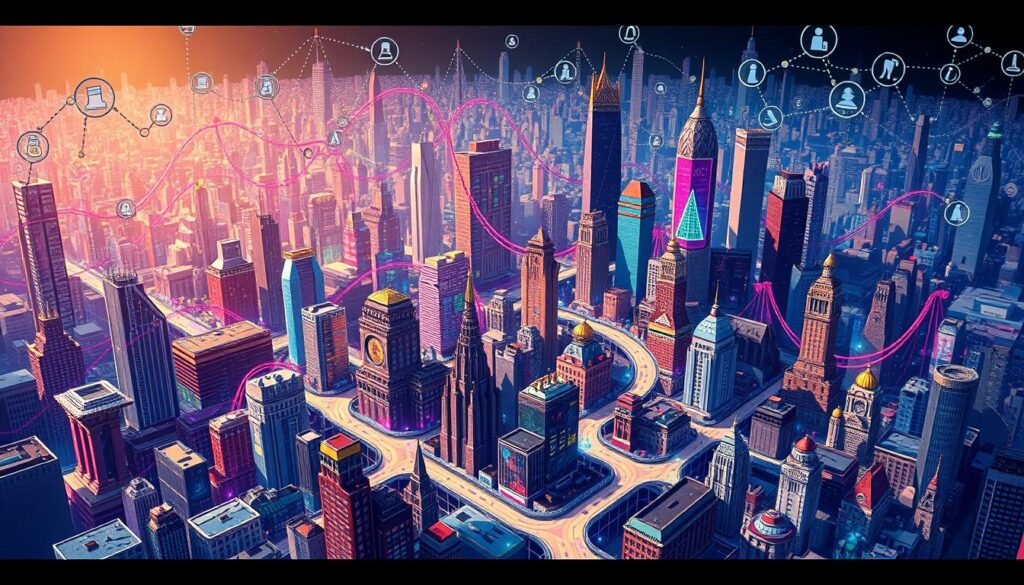
How to Get Started with Tokenized Assets
Navigating the world of tokenized assets can seem daunting at first, but with the right guidance, you can easily integrate these innovative financial instruments into your Digital Asset Management or Tokenized Investment Opportunities strategy. Here’s a step-by-step process to help you get started:
Step-by-Step Process
- Understand the Basics: Begin by familiarizing yourself with the fundamental concepts of tokenization, including how real-world assets are represented as digital tokens on the blockchain.
- Identify Your Investment Goals: Determine your specific investment objectives, whether it’s diversification, passive income, or exposure to unique asset classes.
- Research Tokenized Asset Platforms: Explore the various platforms and marketplaces that facilitate the trading and management of tokenized assets, considering factors like security, liquidity, and regulatory compliance.
- Conduct Due Diligence: Thoroughly research the tokenized assets you’re interested in, evaluating the underlying real-world assets, the project’s team, and any associated risks.
- Set Up Your Digital Wallet: Establish a secure digital wallet to store and manage your tokenized assets, ensuring you have the necessary infrastructure to participate in the market.
- Start Investing: Once you’ve completed the preparatory steps, you can begin investing in tokenized assets that align with your investment goals and risk profile.
Platforms and Tools to Use
Several platforms and tools have emerged to facilitate the adoption of tokenized assets, making the process more accessible for both individual and institutional investors. Some of the leading options include:
- Tokenization Platforms: Specialized platforms like Securitize, Polymath, and Harbor that provide end-to-end solutions for tokenizing real-world assets.
- Digital Asset Management Platforms: Platforms like Bitwise, Grayscale, and CoinFund that offer managed investment products and services for tokenized assets.
- Cryptocurrency Exchanges: Mainstream exchanges like Coinbase, Kraken, and Binance that have integrated tokenized asset trading into their offerings.
By leveraging these platforms and tools, you can seamlessly incorporate tokenized assets into your Digital Asset Management or Tokenized Investment Opportunities strategies, unlocking a new world of financial opportunities.
Conclusion: The Future of Tokenized Real-World Assets in Crypto
As we have explored throughout this comprehensive guide, the emergence of tokenized real-world assets in the crypto ecosystem holds immense promise. By leveraging blockchain technology, asset owners can now unlock new levels of liquidity, fractional ownership, and reduced transaction costs, revolutionizing how we interact with and invest in tangible assets.
The diverse applications of tokenization, spanning real estate, art, and commodities, demonstrate the far-reaching impact of this transformative trend. As regulatory frameworks continue to evolve and market adoption accelerates, we can expect to see an increasing number of innovative use cases and mainstream adoption of this innovative financial technology.
Looking ahead, the future of Tokenized Real-World Assets in Crypto is poised to be one of exponential growth and deep integration within the broader Asset Tokenization landscape. By staying informed and embracing the potential of this emerging field, investors and financial institutions can position themselves at the forefront of the next wave of digital transformation in the world of finance and investment.
FAQ
What are tokenized real-world assets?
Tokenized real-world assets refer to physical or digital assets that are represented as digital tokens on a blockchain network. This allows for the fractionalization and improved liquidity of traditionally illiquid assets, such as real estate, art, or commodities.
How do real-world assets get tokenized?
The process of tokenization involves creating a digital representation of a physical or digital asset on a blockchain. This is typically done through the use of smart contracts, which automate the tokenization process and ensure transparency and security.
What are the benefits of tokenizing real-world assets?
Tokenization offers several key benefits, including improved liquidity, fractional ownership, reduced transaction costs, and enhanced transparency and security through the use of blockchain technology.
What types of real-world assets are being tokenized?
Common examples of tokenized real-world assets include real estate, artwork, and commodities. These assets are being transformed into digital tokens, allowing for more accessible investment opportunities and streamlined ownership transfer.
What are the challenges in tokenizing real-world assets?
The main challenges include regulatory considerations, market adoption, and technological barriers. Navigating the evolving regulatory landscape and overcoming the technical complexities of tokenization are key hurdles for the widespread adoption of tokenized assets.
How does tokenization enhance asset ownership?
Tokenization improves asset ownership by increasing transparency, security, and simplifying transfer processes. Blockchain technology enables a decentralized and tamper-resistant record of ownership, while streamlining the transfer of assets between parties.
What is the role of blockchain technology in asset tokenization?
Blockchain technology is integral to asset tokenization, providing the decentralized infrastructure and enhanced security features necessary to create, manage, and transfer tokenized assets. The distributed ledger and smart contract capabilities of blockchain are crucial for the reliability and trustworthiness of tokenized real-world assets.
Who are the key players in the tokenization space?
The tokenization ecosystem includes established financial institutions, innovative startups, and regulatory bodies. These entities are all contributing to the development and adoption of tokenized real-world assets, each playing a significant role in shaping the future of this emerging market.
How does tokenization impact market dynamics?
Tokenization can influence market dynamics by affecting asset prices, valuations, and overall market liquidity. Increased accessibility and fractional ownership opportunities can lead to changes in investor behavior and trading patterns, impacting the broader market landscape.
What is the future of tokenized real-world assets?
The future of tokenized real-world assets looks promising, with industry experts predicting continued growth and the emergence of new trends, such as increased institutional adoption and the development of more advanced tokenization platforms and tools.


